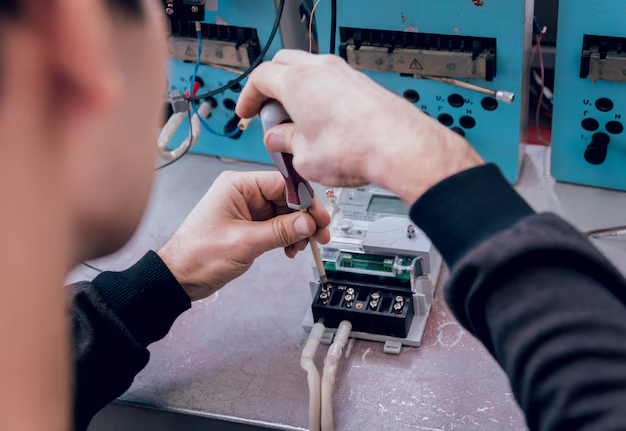Solving Everyday Electrical Issues at Home: Quick Fixes and Tips
There's nothing quite like the frustration of a flickering light or an unresponsive outlet when you're trying to relax at home. Common electrical problems can disrupt the flow of your daily life, but many are more manageable than they seem. Below, explore some typical issues and their straightforward solutions, allowing you to restore comfort and functionality to your home swiftly and effectively.
Flickering Lights
Flickering lights can be annoying, but they often point to simple problems. Loose bulbs or poor bulb connections are typical culprits. To fix this, turn off the light, let it cool if necessary, and tighten the bulb. If the bulb still flickers, trying a different bulb can help determine if a faulty bulb is the issue. Persistent flickering, however, may indicate a loose wiring connection, and in such cases, consulting a professional electrician is wise.
Dead Outlets
Dead outlets are another frequent problem. Tripped circuit breakers or blown fuses are commonly responsible. Start by checking your service panel to see if the breaker for that part of the house has tripped. Simply resetting it can restore power. For outlets connected to GFCI (Ground Fault Circuit Interrupter), pressing the reset button might be the solution you need. However, if these quick fixes don't work, there could be a deeper electrical issue that needs expert attention.
Overloaded Circuits
An overloaded circuit often results in constantly tripping circuit breakers. To alleviate this issue, avoid plugging too many high-demand appliances into a single outlet or circuit. Distribute your electronics and appliances evenly across different outlets. If circuit overloads persist, it might be necessary to hire a professional to upgrade your circuit system to handle more load efficiently.
Light Switches Not Working
If your light switch isn't turning on the lights, it's potentially a simple fix. Sometimes, it could be as easy as replacing the switch. Turn off the power to the switch at the circuit breaker before attempting any repairs. If you're not comfortable performing this task safely, it's best to hire a licensed electrician.
Electrical Surges
Occasional electrical surges can occur due to various reasons, including lightning strikes, power line damage, or faulty appliances. While you can't control everything, unplugging devices not in use can minimize their frequency. If you notice frequent surges, it might be time for a surge protector or a comprehensive electrical inspection by a professional.
By addressing these common electrical issues, you can save time and money while ensuring the safety and reliability of your home's electrical system. However, if you're ever in doubt about dealing with electricity, prioritizing safety and contacting a professional electrician is always the best course of action.
In addition to tackling these electrical issues, there are numerous resources available aimed at providing financial support, enhancing knowledge, and assisting with personal development. Here are some valuable options to consider:
- 💰 Government Aid Programs: Look into energy assistance programs available at both state and federal levels, which can help lower energy bills.
- 💳 Debt Management Solutions: If heavy energy bills are affecting your finances, exploring various debt relief options can offer much-needed relief.
- 🎓 Educational Grants: For those interested in pursuing further education in electrical or trade skills, educational grants and scholarships can open new career opportunities.
- 📈 Financial Literacy Resources: Building your financial knowledge can empower you to make informed decisions about managing energy expenses and investments.
- 🛠 Skill Development Workshops: Enhance your DIY skills by attending local workshops or online courses focused on home repairs and electrical work.
Taking control of your home's electrical issues can not only improve your living space but can also lead you toward better financial and educational opportunities.
